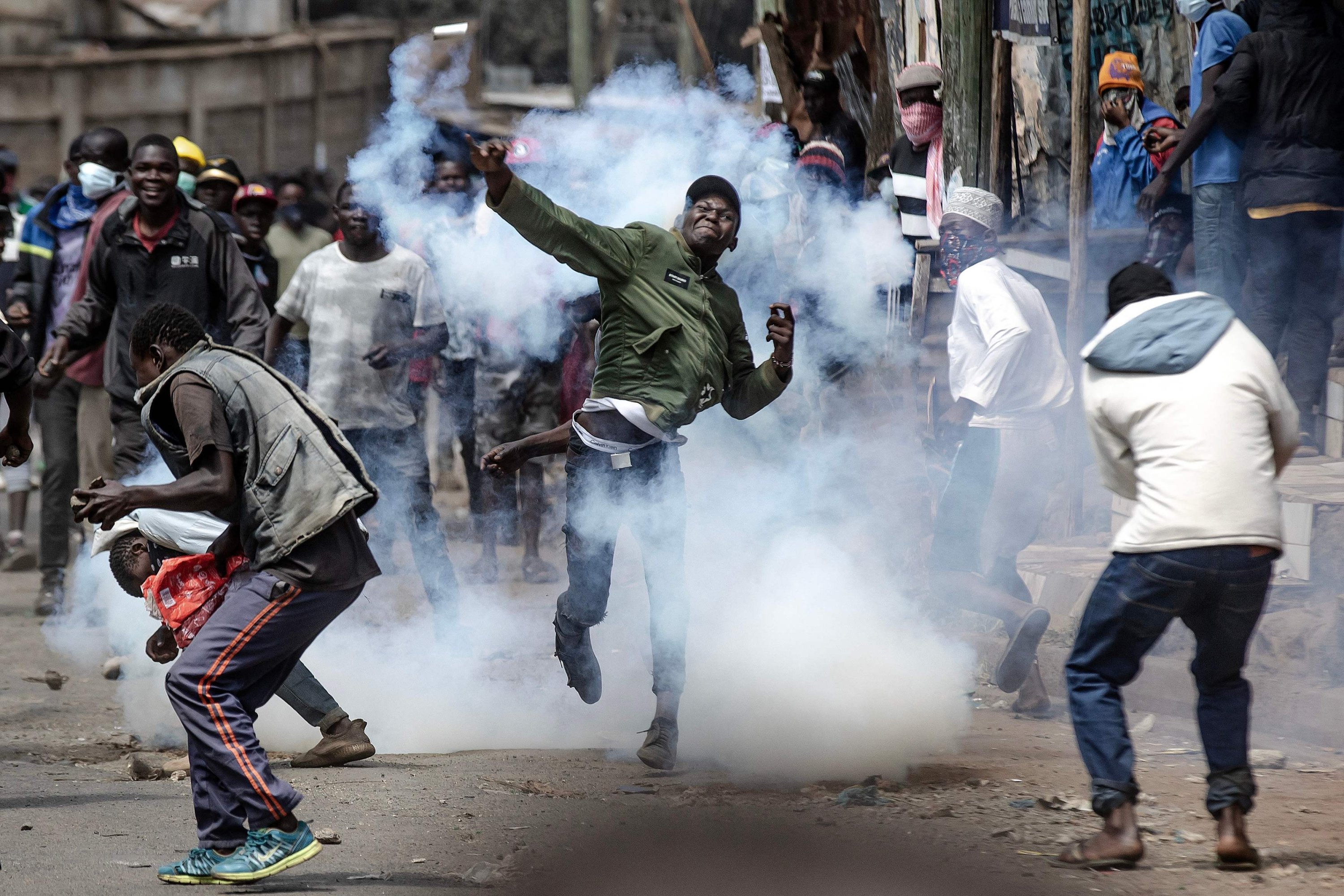© Turkuvaz Haberleşme ve Yayıncılık 2024
Tensions flared into a fierce confrontation in Kenya, with tear gas and live ammunition deployed against protesters during a second day of mass demonstrations against tax increases and the escalating cost of living.
Although Nairobi experienced a temporary lull in unrest on Thursday morning, the informal settlements of Kibera and Mathare, as well as the western city of Kisumu, bore the brunt of clashes between protesters and a heavily armed police force.
The previous day had seen at least six demonstrators killed and over 300 arrests made across the country.
The arrest and detention of Babu Owino, MP for Nairobi's Embakasi East constituency, threatens to stoke further dissent.
The controversial charges of conducting subversive activities against Owino and other vocal opposition figures, including Maina Njenga, have fueled public outrage, drawing more protesters into the fray.
The government's silence on the unfolding crisis and the escalating violence has left the nation in a state of uncertainty.
Kenya's main opposition leader, Raila Odinga, has rallied millions of supporters to join the demonstrations, decrying the newly imposed levies on fuel and housing and the relentless rise in the cost of essential goods under Kenyan President William Ruto's leadership.
In Kibera, a stronghold of Odinga's support, demonstrators engaged in a tense game of cat-and-mouse with riot police.
Residents like Duncan Oketch voiced their frustrations, demanding that President Ruto alleviate the burden on the populace.
For many, the violent incursion of police into the heart of Kibera has struck fear and desperation, leaving families with no haven to protect their children from the onslaught of teargas and chaos.
Kisumu, a city near Lake Victoria and a bastion of opposition strength, witnessed sporadic clashes between protesters and law enforcement, forcing many residents to remain indoors to avoid the turmoil outside.
Even as the opposition leaders called for a convergence of residents at a park near Nairobi's city center, the police preempted the gathering by setting up blockades, anticipating a showdown.
In the wake of these demonstrations, parents faced a harrowing choice – sending their children to school amid the turmoil or keeping them at home in fear of further unrest.

The tragic incident at a school west of Nairobi, where tear gas was unleashed in classrooms, injuring innocent children, cast a dark shadow over the safety and well-being of students.
In response, many parents decided to keep their children at home. While some brave ones attempted to venture to school they were turned away by concerned teachers.
The situation has escalated into a grave humanitarian crisis, with Amnesty International Kenya reporting that police have allegedly killed 30 people since the cost of living protests commenced in March.
The involvement of police masquerading as journalists to arrest protesters has drawn sharp criticism from the Media Council of Kenya.
While opposition leaders assured their supporters of Raila Odinga's safety and emphasized that this movement is led by the people themselves, the nation remains on edge, bracing for what may come next.
